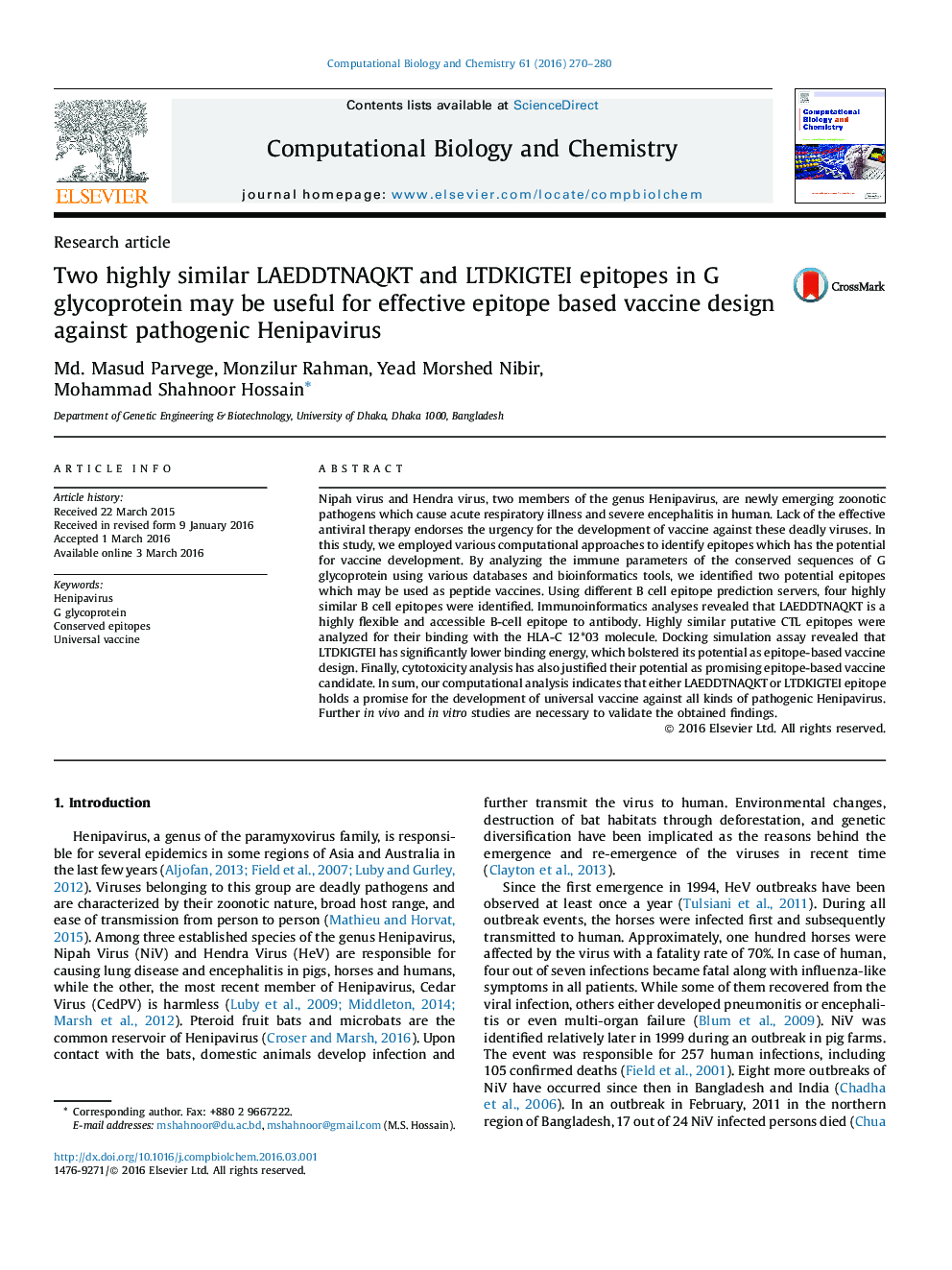| Article ID | Journal | Published Year | Pages | File Type |
|---|---|---|---|---|
| 14953 | Computational Biology and Chemistry | 2016 | 11 Pages |
•Computational approaches were used to identify epitopes for vaccine development against Henipavirus.•The strategy combines B-cell epitope prediction, T-cell epitope prediction, docking simulation assay, and cytotoxicity analysis of the G glycoprotein.•Two potential epitopes were predicted which may be used for the development of peptide vaccines.
Nipah virus and Hendra virus, two members of the genus Henipavirus, are newly emerging zoonotic pathogens which cause acute respiratory illness and severe encephalitis in human. Lack of the effective antiviral therapy endorses the urgency for the development of vaccine against these deadly viruses. In this study, we employed various computational approaches to identify epitopes which has the potential for vaccine development. By analyzing the immune parameters of the conserved sequences of G glycoprotein using various databases and bioinformatics tools, we identified two potential epitopes which may be used as peptide vaccines. Using different B cell epitope prediction servers, four highly similar B cell epitopes were identified. Immunoinformatics analyses revealed that LAEDDTNAQKT is a highly flexible and accessible B-cell epitope to antibody. Highly similar putative CTL epitopes were analyzed for their binding with the HLA-C 12*03 molecule. Docking simulation assay revealed that LTDKIGTEI has significantly lower binding energy, which bolstered its potential as epitope-based vaccine design. Finally, cytotoxicity analysis has also justified their potential as promising epitope-based vaccine candidate. In sum, our computational analysis indicates that either LAEDDTNAQKT or LTDKIGTEI epitope holds a promise for the development of universal vaccine against all kinds of pathogenic Henipavirus. Further in vivo and in vitro studies are necessary to validate the obtained findings.
Graphical abstractDocking simulation assay of the binding of predicted and control epitopes to MHC class I molecules HLA-C 12*03 and H-2Kb. The experimental T-cell epitope LTDKIGTEI binds to the binding grooves of HLA-C 12*03 and H-2Kb with lower binding energy as the control epitope KVITFIDL does.Figure optionsDownload full-size imageDownload as PowerPoint slide
